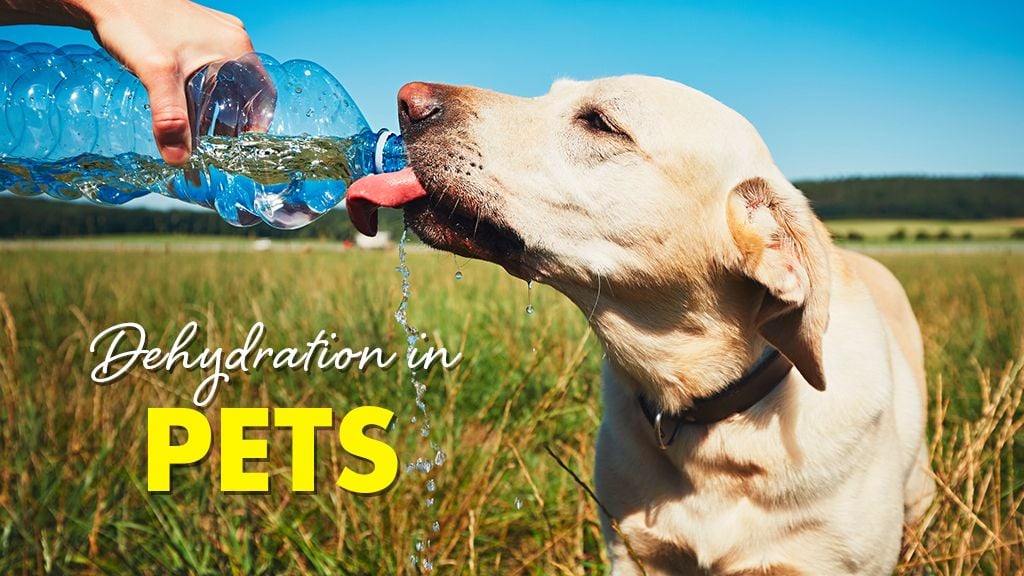Dehydration in Pets
)
Like us, our pets can become dehydrated in the hot weather and also when they are unwell. It's important to understand the dangers of dehydration and what you can do to keep your pet hydrated and healthy.
What are the main causes of dehydration?
There are several reasons your pet can become dehydrated including:
- Inadequate fluid intake
- Heatstroke
- Continual vomiting
- Continual diarrhoea
- Illness
- Fever
- Excessive urinating
If your pet is experiencing these symptoms, please call us immediately for advice - these symptoms can lead to rapid dehydration and serious illness.
How to prevent dehydration:
With the full heat of the summer, keeping prevention tips, symptoms and treatments in mind can help your pet enjoy their days in the sunshine.
Provide plenty of fresh water
This might seem obvious, but providing a sufficient supply of clean water to drink helps prevent dehydration.
If your pet is outside, ensure a fresh supply of water in a shady place is always readily available.
Keep your pet indoors on very hot days
Like us, prolonged exposure to extreme outside temperatures is very dangerous and is life threatening.
Avoid exercising in very hot weather
Like humans, dogs will sweat and lose hydration in the hot weather - all of which is exacerbated by exercise. Exercise your dog very early in the morning or wait until the cooler evening.
Take bottles of water and a bowl when walking or travelling
Being prepared will keep your dog from becoming dehydrated when you're out and about - especially if your dog is going to be active. A small bowl and bottle of water is all it takes to keep them happy and hydrated, just as you would do for yourself.
Never leave your dog in the car
Dogs can rapidly overheat when left in the car. As they regulate their body temperature through panting, dehydration can occur quickly, as well as heat stroke and sudden death.
What are the symptoms of dehydration?
- Loss of elasticity in the skin - this can be tested by pulling lightly on the skin, if it doesn't return to its original position quickly, your pet might be dehydrated.
- Loss of moisture in the gums - this is known as Xerostomia and is when the gums become dry and sticky, accompanied by saliva that is thick and pasty.
- Loss of appetite
- Panting
- Dry nose
- In severe cases, collapse from shock.
How to treat dehydration:
The primary treatment for dehydration is providing fluids - when the case of dehydration is mild, it can often be treated by providing access to clean water and electrolytes. However, more severe cases can debilitate your pet and require immediate veterinary attention. Like humans, animals lose minerals as they dehydrate. Intravenous fluids in hospital can often be a necessary measure to restore their hydration levels efficiently, while they're also being closely monitored. In some cases, further investigation of the cause may also be required.
If you are at all concerned about your pet, do not hesitate to call us on (03) 9596 4804 - we're here to keep them as happy and healthy as possible.
| Tags:Client InformationHealth AdviceProactive Pet Care |
)